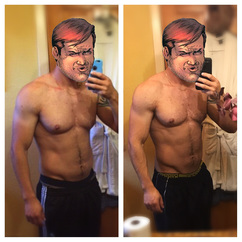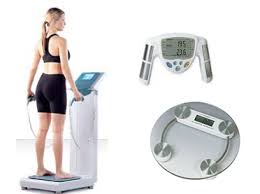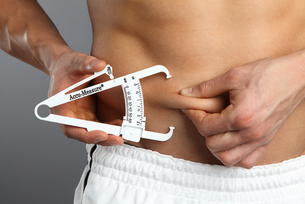|
As I mentioned in my previous article (‘Why Aren’t You Progressing'), one of the main reasons a person may not be progressing is due to their inadequate methods to gauge their progress in their fat-loss or muscle-gain endeavors. For the Scale Watchers: Most fitness enthusiasts simply go to the gym, step on whatever scale is available and either become overjoyed or disheartened, because they did (or didn’t) see the number they wanted to see. Solely watching the scale (at different times of the day) is really doing a disservice to yourself because:
How to Weigh Yourself Correctly: What I recommend is for an individual to weigh themselves every morning, upon waking, after using the bathroom and in the nude (or in undies, just be consistent). This will give them the best indication of their bodyweight. The reason I recommend this is because weight fluctuates day to day for various reasons (food content in stomach, hydration levels, water retention from salt intake or menstrual cycle) and simply just weighing yourself 1-3 times a week isn’t enough data to really asses what is going on. So by weighing-in everyday (upon waking) you can begin to asses what your trend of weight-loss (or weight-gain) looks like over time, because acute fluctuations are expected and will happen. Body Measurements: A lot of times the scale doesn’t tell the whole story when it comes to gaining muscle or losing fat. Say the scale isn’t moving but your measurements (such as waist, legs, thighs, arms & etc) are going down, then you are indeed losing body-fat. This would actually indicate that you are putting on small amounts of muscle along with losing fat! I would recommend you measure yourself in the morning, after weighing-in. Measure your arms, thighs, and waist, and make sure to record the data! You can take measurements once a week, since measurements don’t fluctuate as much as body-weight, just be consistent with the day you measure yourself. Progress Pictures: Weekly progress pictures definitely can show improvements on your physique when the scale isn’t budging. Just make sure to use the same location and lighting for accuracy purposes to compare past and present pictures. Try to take the pictures in the morning after your weigh-in, be consistent on the day you take your progress pictures as well (just like when you take your measurements). Just to give an idea of how progress pictures and measurements can tell a different story, below is a picture of myself. The photo on the left is from 7/23 & the photo on the right is from 12/5…Difference in weight? None, in both I weigh 188 lbs…Biggest difference is that my waist is 1.5 to 2 inches smaller in the picture on the right. Had I only been going by my scale weight and not taken measurements or weekly pictures, I would have thought that everything that I was doing was inadequate! Workout Journal: Keep a workout log and track your workouts! Record every set & rep. You should be getting stronger (completing more reps, increasing the weight, increasing sets or increasing the time under tension) every workout. The name of the game is progressive overload, so keep a ledger of how your workouts are progressing & assess what you liked, didn't like, and what could you try differently next time to improve. This something many people overlook. Not Recommended for Analyzing Progress: I don't like to measure a person’s body-fat percentage due to the inaccuracies with the most of the readily-available methods. Plus in the reality of it all, it is just a number…Either you are happy with your level of conditioning or not.
0 Comments
|
ArchivesCategories |
|
Home
|
Articles |
Coaching |
Testimonials |
About |
Blog |




 RSS Feed
RSS Feed